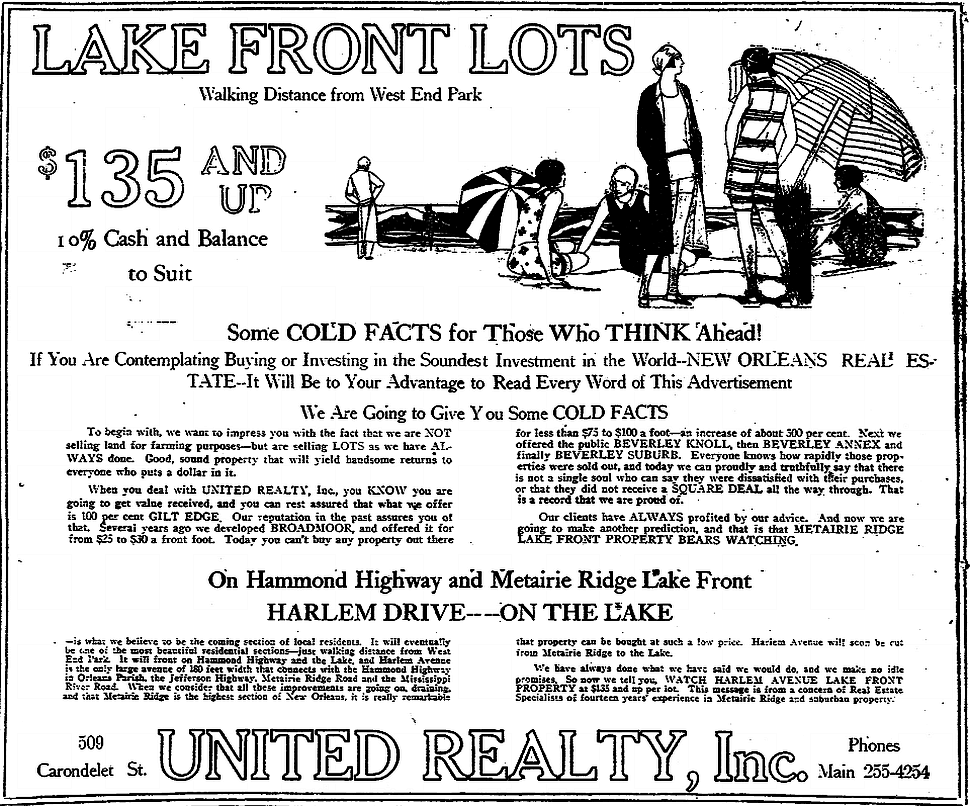|
Today in New Orleans History |
|
|
April 19


 Lake Front Lots -- $135 And Up
April 19, 1925 "Harlem Drive -- on the Lake -- is what we believe to be the coming section of local residents.
It will eventually be one of the most beautiful residential sections" boasted United Realty, Inc., almost 90 years ago,
in this April 19, 1925 advertisement in the Times-Picayune for lots selling for $135 and up. Harlem Drive would later
be renamed Causeway Boulevard and, as we know, is a hub of commercial activity -- especially near Lake Pontchartrain.
United Realty was quick to point out that these lots were not being sold for farming, which attests
to the rural nature of the area back in the day. But much of the land was swampy at best. United Realty countered this
fact with "When we consider that all those improvement are going on, draining, and that Metairie Ridge is the highest
section of New Orleans, it really is remarkable that property can be bought at such a low price". However, the
land being offered for sale did not sit atop the Metairie Ridge, which parallels Metairie Road. In
fact, neither Harlem Drive/Causeway Boulevard nor Hammond Highway existed at the time this ad was published. Harlem
Drive was planned to run from the lake to the river, and would intersect with Hammond Highway (which was conceived to run
along the lakefront from New Orleans to Hammond, Louisiana -- an idea that never came to pass), Metairie Ridge Road (now Metairie
Road), Jefferson Highway, and the river road. The 1925 advertisement notes that "Harlem Avenue will soon be cut
from Metairie Ridge to the Lake" and would be 180 feet wide. The property offered ("In front will be Hammond
Highway") was purportedly "Just walking distance from West End Park" -- which would quite a long walk by today's
standards. United Realty had previously developed land in the Broadmoor area (at $25 to
$30 per front foot) and proudly boasted "Today you can't buy property OUT THERE for less than $75 to $100 a foot--an
increase of 500 per cent". The company was active in selling lots in Beverly Knoll, Beverly Annex, and Beverly
Subdivision -- all in the heart of what would become know as Old Metairie, just west of Bonnabel Boulevard. Having done
that, United offered for the buyer's perusal "And now we are going to make another prediction, and that is the METAIRIE
RIDGE LAKE FRONT PROPERTY BEARS WATCHING". And right, the were!  

To receive an update for each day in New Orleans
history, join our facebook page
- Today in New Orleans History
|
|
|

To receive an update for each day in New Orleans history,
join our facebook page - Today in New
Orleans History.
Analytics |


